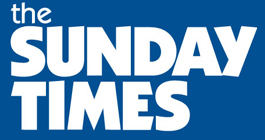News
Lanka moves to reduce its trade surplus with US
Sri Lanka is among the countries currently facing a 90-day pause on the new tariffs—as announced by US President Donald Trump on Wednesday—and is trying to work out a plan to reduce the trade surplus in its favour by increasing imports from the US amidst possible duty cuts.
The government will also look for new markets in India, China, Europe and several other countries as a way to circumvent the newly imposed US tariffs on Sri Lankan exports, a Finance Ministry source said.
This will be in addition to talks with US authorities to reduce the 44% tariff on Sri Lanka’s exports while also exploring ways in which the government can help exporters to ease the tariff burden on them.
Sri Lanka also plans to appeal to the US government to extend the 90-day pause for six months while sending a delegation for talks. President Trump announced on Wednesday a 90-day pause for countries hit by US tariffs, except China, but the universal reciprocal tariff of 10%” will continue on all countries, including Sri Lanka.
“We have a short period to take measures to offset the impact of the tariff hike of 44%, but we will have to deal with the impact of this in the long run, so we are looking at several options,” the official said.
Among the alternate markets for Sri Lankan exports that are being looked at are India, China, Malaysia, Indonesia and EU nations, the official said.
This would be in addition to discussion with the US to see how the tariffs could be slashed further, he added.
Most exports, including garments, tea and gems, will be impacted by the tariffs, he added.
At present Sri Lanka imports animal feed, pharmaceutical products, electrical and electronic products, yarn, plastic products, chemical products, meat/fish and dairy products, telephone sets, audio-video equipment and parts, woven fabrics, paper and paper products, motor vehicles and parts, cereals and its products, automatic data processing machines, switches, boards and panels, unmanufactured tobacco, aircraft and parts, soap, washing preparations, waxes, candles, base metal products, and paints, varnishes and dyeing extracts, among others.
According to trade officials, the highest duties imposed on US goods are vegetables, fruits and nuts (38.3%); food products (35.9%); leather producers (32.6%); rubber and plastic goods (28.8%); and vegetable oils and fats (25.8%). Soybean meal as animal feed was the largest import, worth US$140.66 million in 2024, according to official data, while the second largest import from the US was pharmaceutical products, which incidentally is a tax-free import.
Officials said that while Sri Lanka imports stocks of animal feed from the US, local authorities are looking at improving local production and finding other cheaper sources. There is no impact on pharmaceutical imports from the US, as they are duty-free, but the pharmaceutical industry has been trying to increase local production, thereby reducing imports and saving foreign exchange.
The trade volume between the two countries was estimated at $3.4 billion in 2024, with US exports to Sri Lanka reaching $368.2 million, while Sri Lanka’s exports to the US reached $3 billion, with the surplus of $2.6 billion in favour of Sri Lanka. The US is the largest export market for Sri Lanka, accounting for 27% ($3.0 billion) of the country’s total exports ($12.8 billion) in 2024.
The Institute of Policy Studies, an independent think tank, in a recent report says if one ignores VAT, subsidies, and exchange rate interventions, reciprocity can be simplified to import tariffs and para-tariffs. Sri Lanka has general customs duties, an Export Development Board CESS, excise duty, Port and Airport Development (PAL), and a Social Security Contribution Levy (SSCL). Once the product-level tariff rates are calculated on an ad valorem basis, Sri Lanka has a higher tariff rate than the US for almost all sectors. It suggested phasing out para-tariffs and tightening trade relations as one of the measures to overcome the crisis.
Meanwhile, the US pause was welcomed by industry leaders.
The Joint Apparel Association Forum (JAAF) commended the government for swift negotiations with the US. JAAF credited the administration’s efforts for likely securing Sri Lanka’s inclusion in the 90-day reprieve.
“This pause provides critical breathing space,” a JAAF spokesperson noted, emphasising the importance of sustained engagement to secure longer-term trade concessions.
Central Bank officials said the committee tasked with managing the fallout from the tariffs had yet to finalise recommendations. As talks continue, the government is expected to intensify efforts to solidify a permanent, favourable trade arrangement with Washington.
Meanwhile, a previously called all-party conference went ahead as planned on Thursday, chaired by President Dissanayake. It was held following a request made by 12 opposition party leaders to meet the president for a discussion on the matter.
The best way to say that you found the home of your dreams is by finding it on Hitad.lk. We have listings for apartments for sale or rent in Sri Lanka, no matter what locale you're looking for! Whether you live in Colombo, Galle, Kandy, Matara, Jaffna and more - we've got them all!

